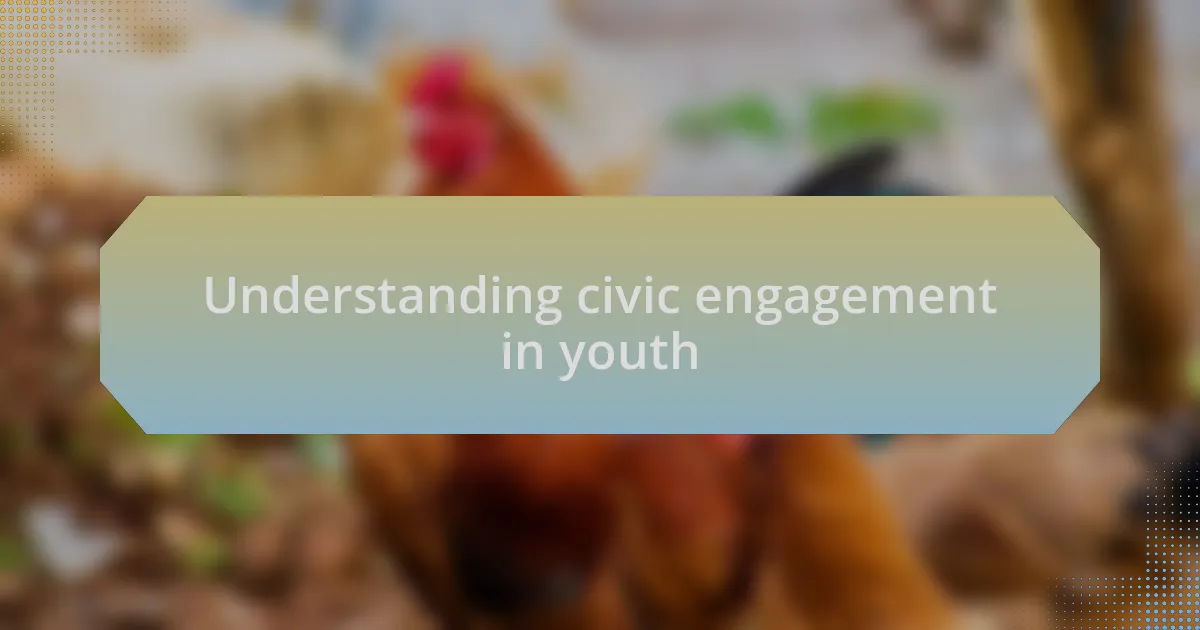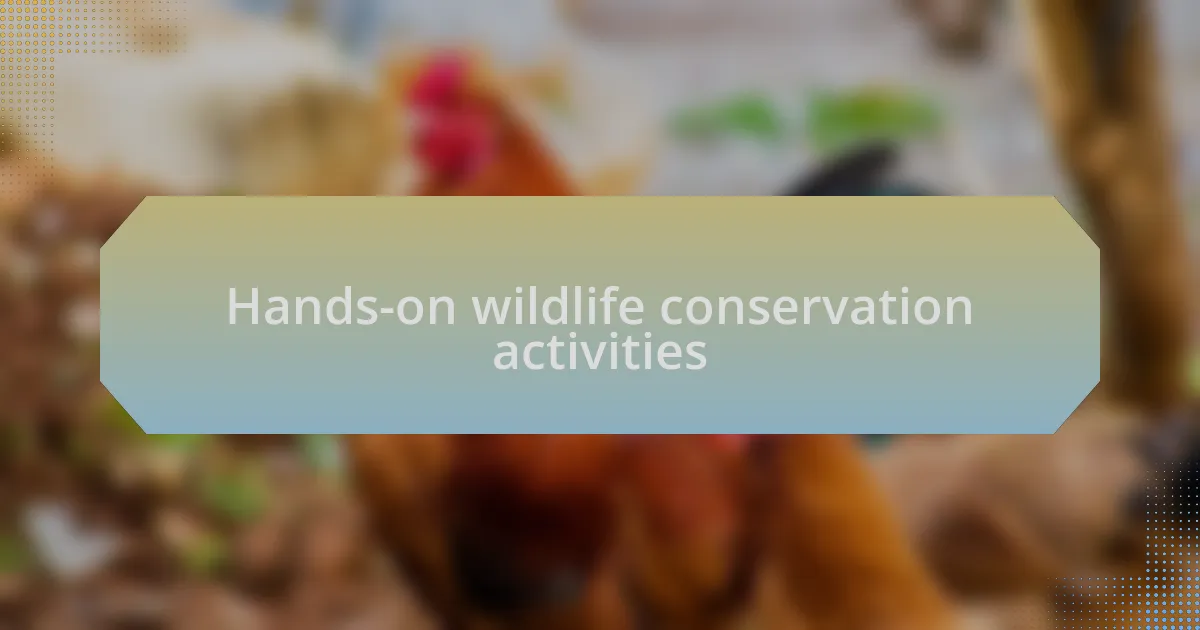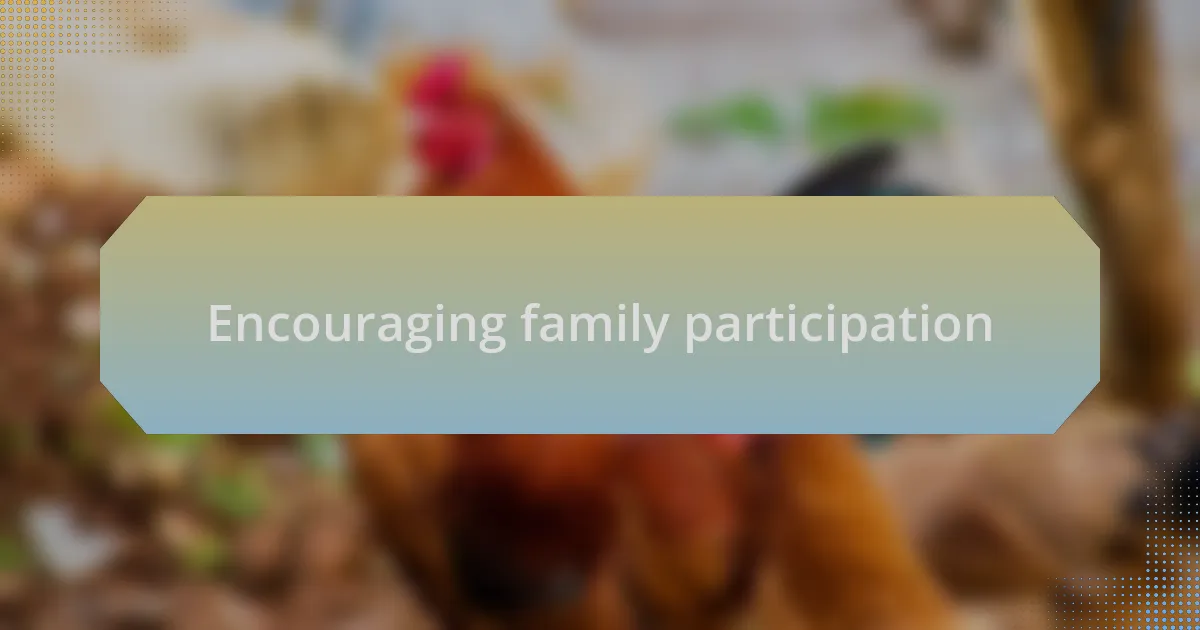Key takeaways:
- Civic engagement in youth fosters responsibility, leadership, and teamwork through community involvement and hands-on activities.
- Strategies such as storytelling, art, and creating a sense of ownership effectively engage children in wildlife conservation efforts.
- Family participation in conservation activities strengthens bonds and encourages lifelong commitment to environmental stewardship.
- Measuring youth involvement highlights their positive impact and growth in knowledge, inspiring ongoing engagement in conservation initiatives.

Understanding civic engagement in youth
Civic engagement in youth is the process through which young individuals participate in their communities, affecting change and fostering responsibility. I recall my first experience volunteering at a local wildlife sanctuary, where I felt a sense of belonging while working alongside peers who shared my passion for conservation. Wasn’t that an exhilarating moment when we realized our collective efforts could impact the environment positively?
Young people often possess an innate curiosity about the world, leading them to question societal norms and advocate for issues they are passionate about. I remember asking a group of children why they thought protecting animals was important. Their eyes lit up with enthusiasm as they expressed their thoughts on friendship, habitat preservation, and the value of every living being. Isn’t it inspiring how their fresh perspectives can challenge our own views and initiate important discussions?
Moreover, civic engagement cultivates essential life skills in youth, such as leadership, teamwork, and critical thinking. I once volunteered alongside a group of teenagers to organize a community clean-up event. The laughter and debates we shared while planning were invaluable experiences that strengthened our bonds and taught us how collaboration can lead to real change. Don’t you think these experiences shape not only their futures but also contribute to a more aware and active society?

Strategies for engaging children
To engage children in civic activities, I’ve found incorporating hands-on experiences works wonders. I once organized a wildlife art day, where kids painted their favorite endangered animals. Watching their creativity flow as they discussed why these creatures matter was a remarkable reminder of how art can spark meaningful conversations about conservation.
Another effective strategy is storytelling. During one session, I shared captivating tales about local wildlife and the challenges they face. It was heartwarming to see the children’s eyes widen with concern and curiosity. Could it have been their imaginations running wild? Because later, they began brainstorming ways to spread awareness, showing just how powerful a story can be in igniting passion and responsibility.
Finally, I believe creating a sense of ownership is crucial. Involving children in initiatives like planting native trees at a local park not only connects them to nature but also instills pride in their contributions. I still cherish the smiles on their faces as we nurtured each sapling together. Don’t you think it’s these moments of connection that cultivate lifelong advocates for wildlife conservation?

Hands-on wildlife conservation activities
Engaging children in hands-on wildlife conservation activities can be both fun and educational. One memorable experience I had involved organizing a mini wildlife habitat project where kids built birdhouses using recycled materials. As they hammered away, I watched their excitement grow, particularly when they realized these houses would provide safe homes for local birds. Doesn’t it feel rewarding to contribute something tangible that directly benefits wildlife?
Another impactful activity was a stream clean-up day I coordinated. Armed with gloves and nets, the children enthusiastically scooped up litter, transforming a neglected area into a cleaner habitat. I’ll never forget the pride in their voices as they shared stories about their favorite fish and frogs they hoped to see thriving in the newly cleaned stream. Isn’t it inspiring how a simple act of cleaning can connect kids to the creatures that rely on a healthy ecosystem?
From my experience, simple wildlife monitoring projects can also captivate children’s interest. We set up a motion-activated camera in a nearby woods, and when we reviewed the footage together, the children were ecstatic to see deer and foxes roaming through the frame. Their awe and curiosity sparked conversations about habitat preservation, illustrating, once again, that these hands-on experiences can deeply resonate. Could there be a better way to foster a sense of responsibility for our furry and feathered neighbors?

Creating awareness through education
Creating awareness through education is vital in shaping young minds about wildlife conservation. I once led a workshop on local ecosystems where children learned about the interconnectedness of species. Watching their faces light up when they grasped how every organism, no matter how small, plays a role in maintaining balance was profoundly gratifying. Isn’t it fascinating to see how knowledge can ignite a passion for preservation?
Additionally, I organized a storytelling session focused on endangered species. Each child was tasked with researching a species and sharing its story, filled with both facts and emotions. There was one instance when a shy boy spoke passionately about the plight of the sea turtle, relating it to his own experiences at the beach. His ability to connect this crucial issue to his life opened up a heartfelt discussion about what we can all do to protect these creatures. How powerful is the combination of narrative and education in fostering empathy?
Incorporating creative projects has also proven effective. I had the children create posters advocating for wildlife protection, allowing their ideas to take visual form. As they crafted slogans and drew vibrant images, I saw their creativity blossom alongside their understanding of the issues at hand. Doesn’t it bring joy to see children channel knowledge into art, making them active participants in the conversation about conservation?

Encouraging family participation
Encouraging family participation is crucial in deepening the impact of civic activities focused on wildlife conservation. I remember a family day event where parents and children worked side by side planting trees in a local park. The smiles on their faces as they dug into the soil and connected with each other and nature were truly heartwarming. How often do we get to see family bonds grow stronger through a shared commitment to our planet?
One unforgettable experience was when I organized a wildlife documentary night for families. After watching the footage of majestic animals in their habitats, families engaged in a lively discussion about what they could do to help. I was amazed at how the children inspired their parents to take the initiative to reduce plastic use at home. Isn’t it wonderful to think about how children can be catalysts for change within their families?
Involving families in conservation efforts allows for lifelong learning and inspiration. During a beach cleanup, children and parents collaborated to collect trash, talking about the importance of protecting marine life while they worked. Witnessing a child excitedly explain to their parent the effects of plastic on turtles taught me that these moments can spark a genuine commitment to stewardship that lasts well beyond the event. Isn’t it rewarding to see these young voices contribute meaningfully to the conversation?

Measuring impact of youth involvement
Measuring the impact of youth involvement in civic activities can be both an enlightening and rewarding experience. For instance, after a local conservation project where teenagers led a campaign to protect local bird species, we conducted a survey to assess their peers’ awareness of biodiversity. The shift in knowledge was astounding—what I initially thought would be a small ripple turned into a wave of interest, with many students wanting to learn more about wildlife.
I recall a specific instance when we organized a monthly wildlife monitoring program. The results from the youth participants were impressive; they not only collected data but also learned how to analyze it. Watching them present their findings to the community one evening gave me a profound sense of pride. It was in this moment that I realized how vital it is to give youth platforms to express their insights—wasn’t it remarkable to witness their confidence flourish?
Through such initiatives, I learned that youth engagement is a powerful metrics indicator for the success of conservation efforts. When they took ownership of local conservation projects, not only did their excitement grow, but so did their commitment to ongoing involvement. Can you imagine the long-term effect this could have if we continue nurturing their enthusiasm?